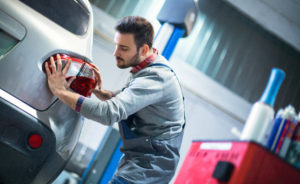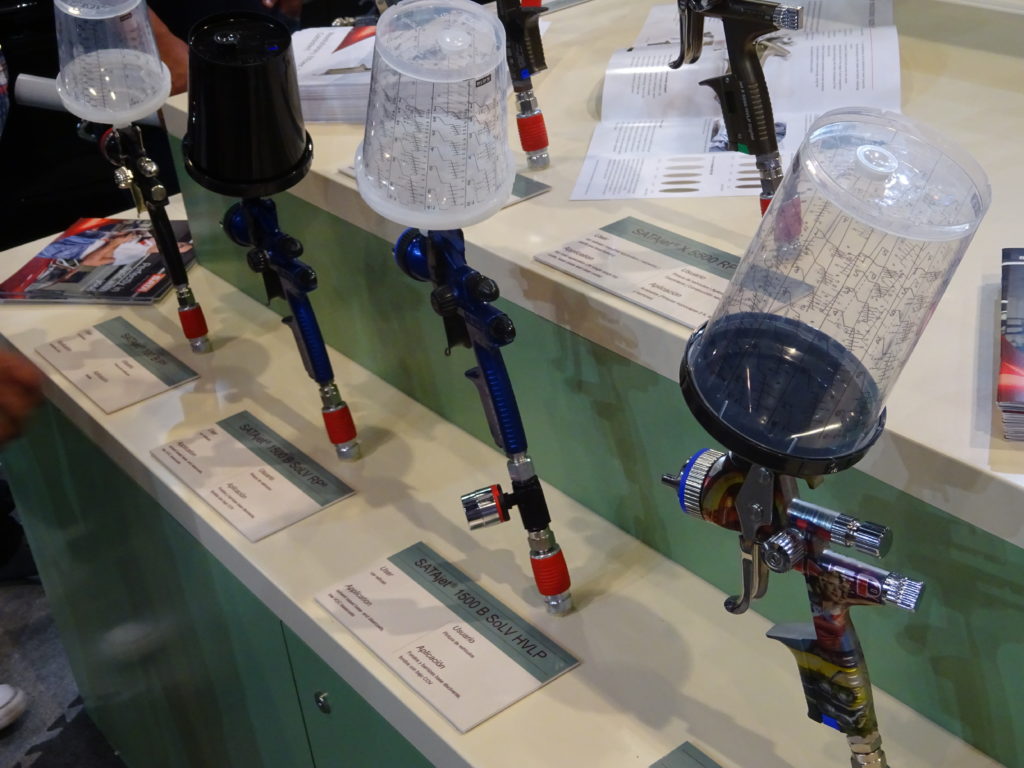
Test drives, test fits, IP footnotes vs. OEM: 5 more estimating tips from the DEG
By onAnnouncements | Associations | Business Practices | Repair Operations | Technology
The Database Enhancement Gateway, which allows repairers and insurers to make inquiries and suggestions of the estimating providers at no cost, offers weekly tips for repairers on the Audatex, Mitchell and CCC programs online and through the Society of Collision Repair Specialists’ email list.
If you haven’t used the free service before to submit questions about estimating collision repair work or just browse responses to other carrier and shop questions, check it out. It’s a good way to find IP best practices and help write the most accurate estimates or appraisals possible.
Here’s our latest monthly roundup of areas spotlighted as tip-worthy by the DEG. To receive the tips as soon as DEG releases them, like/follow the DEG’s Facebook and Twitter feeds. (It also posts videos to a YouTube channel once in a while.) Or just browse the more than 14,000 inquiries and responses in the database and see what else you learn.
Test driving for calibration not included either
The Database Enhancement Gateway in a 2016 tip advised that test driving wasn’t part of any estimating service labor times except for potentially alignment values. This year, the DEG confirmed that driving the customer’s car for diagnostic or recalibration purposes wasn’t included either.
“Road Test is only included to verify alignment after completion,” the DEG wrote in a recent tip.
“Some vehicle OEM’s may require this process to reinitialize the vehicle after scanning and calibration is complete to ensure the vehicle systems are functioning properly.
“Considerations for road testing may require cost of fuel as well as vehicle owner approval.”
The latter is a smart thing to work out with the customer up front given telematics. You don’t want the consumer being alerted by their car that it’s being driven and angrily accuse you of joyriding it it.
It’s also important to check the estimating system’s P-pages for the parameters of those alignment labor times including a road test. For example, Mitchell’s four-wheel alignment time includes “Verify alignment by road test” — but doesn’t include “Diagnostic road test to determine if alignment operations are necessary.”

Audatex two-, three-stage interior paint setup
The DEG earlier this month drew repairers and insurers’ attention to Audatex’s handling of two- and three-stage paint setup.
Audatex’s Database Reference Manual Section 4-4 states that each of the two procedures “Does not include additional time for setup.”
According to the DEG, the DBRM P-pages only define setup as cleaning the gun, mixing the clear coat, gathering everything you need to do the work, and adding flex additive.
“If refinishing interior, edges, and or undersides in a separate booth cycle, additional ‘SET UP’ is NOT INCLUDED and would be an on the spot evaluation with manual line entry,” the DEG wrote.
Audatex itself discussed the idea of a manual-entry second booth cycle in this 2018 inquiry about a 2016 Ford F-150 XLT Crew Cab with an extra short bed.

The DEG quoted Audatex’s specific bullets on two- and three-stage interior refinishing.
Two-stage Interior
• Provides 20% additional refinish time for two-stage of edges, jambs, undersides and interior panels (not including trim) when selected
• Does not include additional time for setup
• Does not contain a threshold time allotment
• Does not apply to the 2.5 hour threshold for two-stage exterior
• User-defined threshold will not apply when used in conjunction with two-stage exterior, user-defined
• Produces a message at the bottom of the estimate explaining the two-stage calculation on the estimate
• Prints with other options on the estimate. …
Three-stage Interior Surfaces
Provides 35% additional refinish time to three-stage edges, jambs, undersides and interior panels (not including trim) when selected.
• Does not include additional time for setup
• Does not contain a threshold time allotment
• User-defined threshold will not apply when used in conjunction with three-stage exterior surfaces
• Prints with other options on the estimate (Minor formatting edits.)
Mitchell: Refinishing used panels
The DEG in a May 13 tweet directed repairers refinishing a recycled or repaired panel to review Mitchell’s P-pages.
“Labor times related to repaired and/or used panels—example: Remove and install or masking of glass, outside handles or exterior trim, feather prime & block, masking for primer surfacer application—are not included in refinish time,” Mitchell wrote. “The steps required for refinishing a repaired and/or used panel may vary from those required for a new panel depending on the condition of the repaired and/or used panel.”
Collision Hub’s “Repair University” in October 2018 demonstrated how few items were actually included within estimating systems’ base refinishing times — which could result in shops and staff doing a lot of work uncompensated if an estimator fails to manually add it.
Collision Hub CEO Kristen Felder said only wash, scuff, primer/seal, basecoat and clearcoat are contained within the usual panel refinish times.
Prep work to get even an OEM panel to a state where this process could begin might involve numerous other not-included operations — little 0.1s (or more) that add up for the shop and technician, according to the show.
Double-check a footnote with the OEM
Estimating services might contain notes about a part being one-time-use or other information cited as being from the vehicle’s manufacturer, according to the DEG.
However, a third-party aggregation of instructions OEMs can change online at any time might not be able to keep up with the true automaker repair procedure websites. (For that matter, that paper copy of repair procedures you printed out today might be incorrect for an identical vehicle brought in a week later — the OEM might have changed the digital procedures in the interim. That’s why experts advise looking up repair procedures fresh online every time, on every vehicle.)
“It is important to confirm this information directly in the OEM service repair manual from the OEM direct,” the DEG wrote. “Solely relying on 3rd party information may not be the most up to date information available while the information providers are updating the systems to reflect.”
This issue arose during a May 15 inquiry on a 2014 Ford Escape over what the user called part No. CJ5Z7842006A, the liftgate glass.
“CCC/Motors header notes say, ‘Lift Gate Glass is not reusable as outlined in OEM service manual,'” the user wrote. “As such we replaced glass when replacing liftgate. Insurance company has denied payment for glass, saying that Ford has changed their position on this as of Jan 2018.”
The insurer was right. (And kudos to whatever carrier for being on top of OEM repair procedures — and apparently joining the collision industry as acknowledging them as Gospel for payment purposes.)
“There was recent changes in the FORD workshop manual allowing reuse of glass for certain makes and models,” the DEG wrote. “Please reference the FORD workshop manual for the most accurate information. Do not solely rely on the Information in CCC to be 100% up to date in comparison (with) the OEM manuals.”
For its part, CCC has vowed to update its information, estimating this would be done by June 10.
“After review of the Lift gate group, the Lift Gate Glass note has been removed from the Headnotes,” CCC wrote.
CCC also noted: “The footnote applied to the Lift Gate Glass states, ‘LABOR: Time includes wiper arm.’
Test fits not included
The DEG this week pointed out that none of the estimating systems count a test fit as included.
“An example of these circumstances would be during replacement of a quarter panel, and having to perform additional adjustments to the adjacent door and/or trunk lid to ensure proper fit of the replacement quarter panel,” the DEG wrote.
Audatex’s P-Pages note that its R&I and R&R procedure “does not include any duplicated effort such as test fitting,” only the time to get the part into the right place immediately prior to installing it.
CCC’s P-pages describe “Trial-Fit of a component to verify dimensional accuracy of adjoining parts” as not-included — and so does CCC’s RACED guide for estimating operations on recycled parts.
Finally, Mitchell lists repairing or aligning “Parts or adjacent to parts being replaced” as not-included.
“Due to the wide range of collision damage and vehicle conditions, labor times for the following operations are not included in the Guide,” Mitchell explained prior to listing such test-fitting and other operations. (Emphasis Mitchell’s.)
Have a question?
Have a question about AudaExplore, Mitchell or CCC? Submit inquiries to the DEG here. Inquiries, like answers, are free.
More information:
Database Enhancement Gateway homepage
Images:
Test-fitting parts is not included in CCC, Audatex or Mitchell, the DEG pointed out in May 2019. (gilaxia/iStock)
Test driving after an alignment is included, but not test driving for calibration, the DEG pointed out in a spring 2019 tip. (Squaredpixels/iStock)
Paint guns are seen in the SATA booth at SEMA 2018. (John Huetter/Repairer Driven News)
